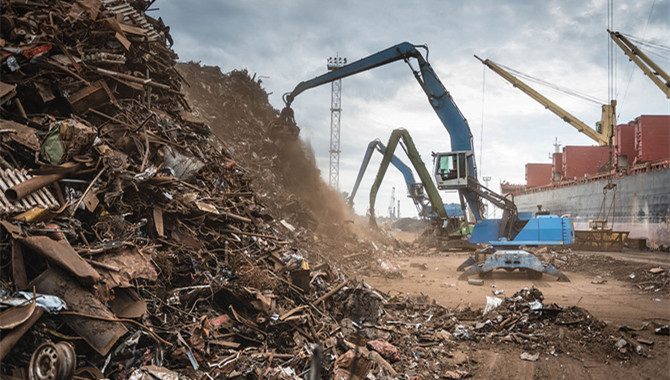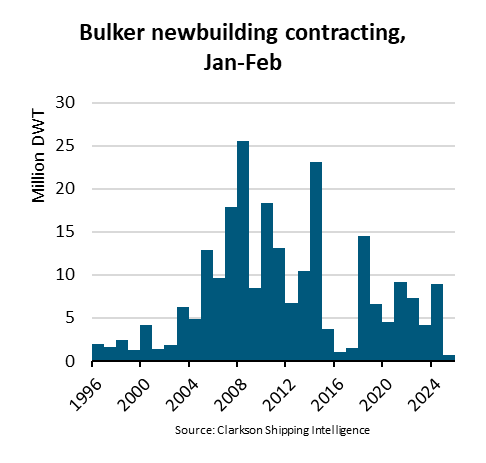Categories of scrap metal
There are two main categories of scrap metal covered in the IMSBC Code, namely Scrap Metal and Ferrous materials in the form of iron metal borings, shavings, turnings or cuttings. Described in the IMSBC Code - "Scrap" iron or steel covers an enormous range of ferrous metals, principally intended for recycling. It may include articles from the size of car bodies to fine metal turnings (swarf). The weight of individual pieces will also vary greatly, ranging from heavy machinery to tin cans. Metal drillings [are] usually wet or contaminated with such materials as unsaturated cutting oil, oily rags and other combustible material.
Risks when handling and carrying scrap metal
Some risks originate from the cargo itself as highlighted in the IMSBC Code, while many more are from the impurities of the metal scrap in bulk.
·Fire risk: Some scrap metal is liable to self-heat and ignite spontaneously, particularly when in a finely divided form, wet or contaminated with materials such as unsaturated cutting oil, oily rags, or other combustible matter. According to our claims data, there are some fire incidents involving the carriage of scrap metal that were caused by the impurities of the cargo which covers an enormous range including items such as lithium batteries, lubricating oil filters, oily rags, styrofoam, plastics and tyres.
·Loading/discharging damage: Scrap metal may include articles of many weights and sizes and there are different handling techniques for the cargo. Because of the characteristics of the cargo and way of loading/discharging, damage to hold ladders and piping arrangements are common. In June 2022, a Member’s vessel suffered damage to a sounding pipe and cracks to the tank top during cargo operation, which was believed to be caused by rough handling of heavy and sharp-edged scrap pieces.
·Wet damage: Concerns around wetted cargo arise because ferritic metals (wrought iron/steel) will oxidise (rust). This is of greater concern if the cargo is in the form of shavings, turnings or cuttings. In this form and if compacted, the cargo may oxidise rapidly and as oxidation is an exothermic reaction, heat will be generated which could ultimately result in fire on board. In addition, this process could be accelerated if the material is wetted or damp or contaminated with wooden pallets, oily rags or some cutting/degreasing fluids. The IMSBC Code does stipulate that the cargo shall be kept as dry as practicable and it shall not be handled during precipitation.
·Radioactivity: Radioactive materials may end up in scrap metal if they are disposed of improperly. In August 2022, during the discharging of scrap metal loaded in Klapeida in the Baltic Sea, port authorities at the discharge port detected radioactivity on some pieces of the steel scrap.
·Health concerns: For larger pieces of scrap, the irregular shape and sharp edges can lead to physical injury during cargo handling. Toxic and harmful fumes may be released into the working environment from impurities of the cargo causing acute and chronic effects on health. In enclosed cargo spaces, there is the risk of asphyxiation because scrap metal is liable to cause oxygen depletion.
Recommendations
Request shippers to provide a detailed description of the scrap metal to be loaded including:
·The identification of the cargo, whether it’s Scrap Metal or Ferrous Metal Borings, Shavings, Turnings or Cuttings. The latter is classified as Group B cargo liable to self-heating and spontaneous ignition.
·Hazard identification and composition
·Handling and storage: Annex 9 of the CSS Code (
IMO Resolution A.714(17)), Safe Stowage and Securing of Metal Scrap in Bulk can be helpful guidance.
Arrange a continuous watch during loading by ship staff and/or surveyor to monitor:
·Any impurities mixed into the cargo, such as lithium batteries, lubricating oil filters, oily cargo, oily rags, styrofoam, plastics, tyres, and other non-metal substances.
·The temperature of this cargo using preferably an FLIR unit for locating hotspot in cargo hold during loading.
·Radioactive material in Scrap Metal: Radioactive test to loaded cargo and Radiation Free Certificate to be obtained especially for cargo loaded at certain ports.
Where dangerous impurities are noticed, immediately stop loading and request that any dangerous pieces of cargo be removed from the ship's holds.
Arrange a pre-loading hold & deck condition survey to document the condition of the holds and deck before the scrap metal loading operation to compare with the condition following discharge in the event that the scrap has damaged the vessel.
The cargo must be loaded and carried in strict accordance with the IMSBC Code. Do not handle the cargo during precipitation.
The crew should be made aware of the risks in the handling and carriage of scrap metal. Appropriate PPE should be worn to mitigate the potential health risks. Entry into the cargo spaces containing this cargo should only be conducted by trained personnel following all safety procedures. Enclosed space training materials can be found
here.
Source: Gard
The opinions expressed herein are the author's and not necessarily those of The Xinde Marine News.
Please Contact Us at:
media@xindemarine.com


 Ningbo Containerized Freight Index Weekly Commentar
Ningbo Containerized Freight Index Weekly Commentar  Ningbo Containerized Freight Index Weekly Commentar
Ningbo Containerized Freight Index Weekly Commentar  Ningbo Containerized Freight Index Weekly Commentar
Ningbo Containerized Freight Index Weekly Commentar  BIMCO Shipping Number of the Week: Bulker newbuildi
BIMCO Shipping Number of the Week: Bulker newbuildi  Ningbo Containerized Freight Index Weekly Commentar
Ningbo Containerized Freight Index Weekly Commentar  Ningbo Containerized Freight Index Weekly Commentar
Ningbo Containerized Freight Index Weekly Commentar